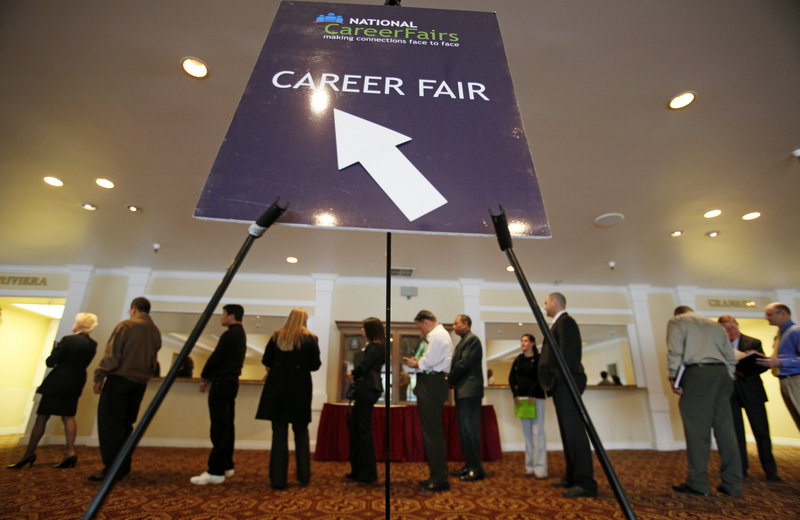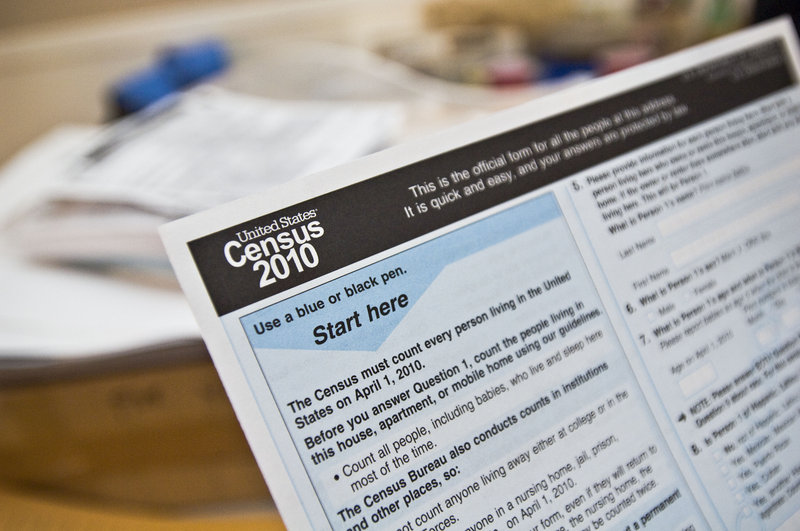WASHINGTON — The U.S. economy’s recovery is starting to gain traction, as employers added 162,000 non-farm payroll jobs in March, the best job growth since the nation entered a recession in December 2007, the government reported Friday.
In another bit of good news, the unemployment rate held steady in March at 9.7 percent for the third consecutive month, according to the Labor Department’s Bureau of Labor Statistics. Even the hard-hit construction sector added jobs in March, but the report also said that a record 6.5 million Americans had been out of work for 27 weeks or longer.
Adding to the evidence of a firming economy, statisticians also revised jobs data for the previous two months, turning January’s 26,000 jobs lost into a gain of 14,000 jobs that month, and February’s 36,000 job losses were revised to only 14,000.
“We are beginning to turn the corner. This month, more Americans woke up, got dressed and headed to work at an office or factory or storefront,” President Obama said while visiting Charlotte, N.C.
Economists applauded Friday’s job numbers as a sign that life increasingly will start feeling better for ordinary Americans.
“This is a significant milestone for economic recovery, because employment growth sets in motion a self-reinforcing dynamic that lends solidity to the expansion. Rising incomes bolster consumer demand, and the production response requires subsequent rounds of hiring,” Alan Levenson, the chief economist for the fixed-income economics division of T. Rowe Price Associates, wrote in a note for investors.
Nigel Gault, the chief U.S. economist for forecaster IHS Global Insight, said the economy had crossed an important barrier, though challenges remained.
“Until this month, the most that we could say was that it looked like job growth was about to turn the corner. Now it seems to have done so. But it will be a long slog to bring down the unemployment rate,” he said in a research note.
Forecasters had envisioned a stronger number for March, but those predictions were based on more government hiring by the U.S. Census Bureau than actually happened.
“Even after adjusting for the 48,000 temporary census workers hired and a rebound effect from the February snowstorms, this number suggests an increase in underlying payroll employment,” Christina Romer, the head of the White House Council of Economic Advisers, said in a statement.
“Moreover, revised estimates now show a small job gain in January and a smaller job loss in February than previously reported. As a result, for the first quarter of 2010 as a whole, job growth averaged 54,000 per month. This is a dramatic change from the first quarter of 2009, when average job loss was 753,000 per month.”
The March report was chock-full of signs of a dormant economy ready to bloom. The decimated construction sector added 15,000 jobs, and while that’s not a huge number, it comes after 72,000 jobs were lost in the previous 12 months.
Manufacturing employment rose by a modest 17,000 jobs, bringing the number of new positions since the start of the year to 45,000. The leisure and hospitality sector added 22,000 jobs, suggesting that Americans are traveling more and businesses are allowing employees to hit the road again.
While the March hiring numbers are good news after such a long period of decline, they were nowhere near what’s needed to knock down the unemployment rate. The economy has lost more than 8 million jobs since the recession began in December 2007, but it must create more than 11 million in order to replace those that were lost and keep pace with new workers entering the labor market.
“We need much more robust job growth, over a sustained period of time, to significantly reduce unemployment. This morning’s report shows that, while things are clearly improving, the private sector is still not positioned to create sufficient numbers of jobs,” Heidi Shierholz, an economist with the Economic Policy Institute, a liberal research center, wrote in an analysis Friday. “There is still an urgent need for aggressive policies to create jobs.”
On another worrisome front, hourly wages for active workers dipped 2 cents in March to $22.47, a sign that the high jobless rate is pressing wages down.
“With so many unemployed and many others forced into underemployment, wage growth has stalled. The Federal Reserve and fiscal policymakers need to continue to provide aggressive support to the economy until there is enough job growth to push unemployment definitively lower,” said Mark Zandi, the chief economist for forecaster Moody’s Economy.com. “That won’t happen until late this year.”
One of the surprises in the March report is that the jobless rate has held steady for the third consecutive month at 9.7 percent, after peaking in October at 10.1 percent.
Tens of thousands of Americans have given up looking for work, and employment data no longer capture them. Many economists expected the jobless rate to tick up as these people begin looking for work again, even as employers increase hiring.
Instead, the number of employed people and the size of the work force continue to rise. Since December, the labor force has increased by 1.1 million and the number of employed, as measured in a household survey, increased by 1.4 million.
This has raised hopes that the jobless rate may have peaked. Although it isn’t getting better, it isn’t climbing well above 10 percent, as some of the more pessimistic forecasts had projected.
“I don’t think anyone can make the case that the unemployment rate has peaked,” cautioned Alan Krueger, the chief economist for the Treasury Department.
In a news briefing, he said there were plenty of challenges ahead for the labor market. For example, for workers who’ve been without jobs longer than 60 days, the average length of unemployment is 38 weeks.
There are plenty of other signs of stress, too.
The Bureau of Labor Statistics report Friday said the number of Americans who’d been jobless for more than half a year rose by an additional 414,000 in March to 6.5 million. The number of people who are working part time for economic reasons, because of downsizing or cutbacks in hours, increased to 9.1 million in March from 8.8 million in February.
“I think we’re realistic about the challenges we face,” Krueger said.
Send questions/comments to the editors.




Success. Please wait for the page to reload. If the page does not reload within 5 seconds, please refresh the page.
Enter your email and password to access comments.
Hi, to comment on stories you must . This profile is in addition to your subscription and website login.
Already have a commenting profile? .
Invalid username/password.
Please check your email to confirm and complete your registration.
Only subscribers are eligible to post comments. Please subscribe or login first for digital access. Here’s why.
Use the form below to reset your password. When you've submitted your account email, we will send an email with a reset code.